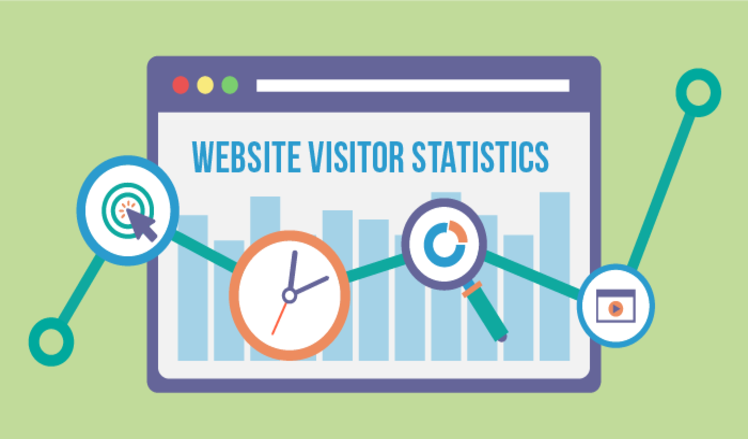How to understand website visitor engagement with web analytics
Based on our experience of web portal development, we have seen that there are quite a number of barriers to understanding website visitors’ behavior as reflected in website analytics.
Usually, there are two major website metrics:
- visitor count
- visitor engagement
Visitor count gives basic details and seems to be a simple metric provided by any web analytics tool.
Website engagement metrics, if implemented wisely, can tell you how much time visitors spent on the page and what they did there. In reality, measuring website engagement appears a real challenge for the two reasons described below. So let’s first take a look at why you can’t go the old way anymore.

Why the traditional approach to analyzing website engagement is not enough
First, most web analytics tools provide only easy-to-count metrics (e.g. ‘pages viewed’ that counts views as the number of pages opened).
Just for a second, let’s imagine people getting on a bus: for a while, all of them are onboard, but in a stop or two some will get off, others will stay till the very route terminal, and some may have got on the wrong bus and will leave it immediately. So, the traditional approach to visitor count implies that all the passengers will stay on the bus.
Second, for such web analytics tools as Google Analytics, on-page time is the time between successive openings of two pages. Such approach may result in overlooking several crucial stages. Say, what if a visitor opened the page and switched to another browser tab or to his e-mail?
To benefit more from website visitor tracking and analysis, you can technically apply the guidelines below (using JavaScript).
1. Counting the real time-on-page
To measure the real time-on-page, you should peel off the irrelevant time from the total time spent on page. For this purpose, consider the active page time implying that:
- the browser is an active application.
- the browser tab with the page is active.
The table below can hint you at how to measure the active time on your page.
|
Active Time |
Passive Time |
|
+ Visitor goes to your page and reads content. + Visitor returns to your page. + Visitor switches back to the browser and your page. |
- Visitor opens a new tab, yours is inactive. - Visitor goes to Outlook, minimizes the browser’s window.
|
2. Handling the types of visitor engagement
With detailed website visitor statistics, you will get deeper insight into the way users see your content. Whether by staying inactive on the page or quickly scrolling it down, visitors can hint at the problems with the page, its content or your ad message if it attracts those who don’t need your products or services. To enrich visitor engagement statistics, mind the ways visitors can treat your web page:
- The visitor viewed only the top of the page and stopped.
- The visitor quickly scrolled, and nothing caught their eye.
- The visitor read the page.
For instance, to count page views, you can pinpoint everyone who scrolled down till the visible middle of the page.
Reading the page should imply that time intervals between scrolls exceed the stated time limit – say, 20 or 30 seconds, excluding the time before the first scroll and after the last one. Though very short pages won’t be considered as 'read', you will get closer to the full picture.
A small tip: The scrolls should be detected however they are done, whether with a mouse, a touch screen, or a keyboard.
Conclusion
In pursuit of the relevant website statistics, it’s not enough to use common metrics. You should go further to adopt and technically implement a more sophisticated approach:
- Count only the active time on page
- Analyze the way visitors interact with the page (view, read, or ignore it)
The advanced statistics of visitor engagement will make sure you get one more source of insights into visitors’ behavior, as well as enable you to improve engagement and raise the conversion rate.

